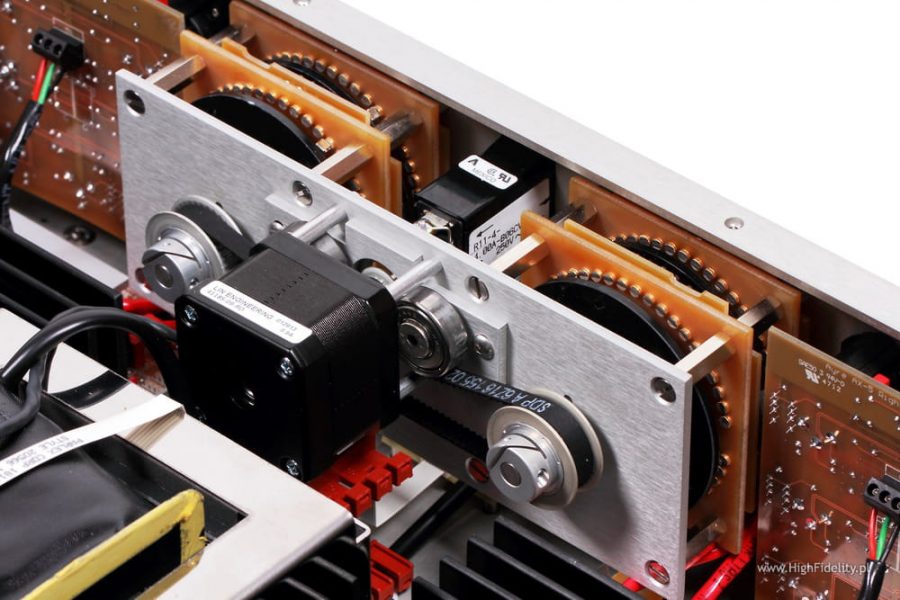Have you listened to the 5xe MP? How close does it sound compared to your preamp? I was noticing it had HT Bypass. Does yours have HT Bypass also?
I have not put the K5xe MP into "the Big Rig" yet, so I really can't answer that. I do already know it is excellent as a friend owns one and I've heard it with a number of different amplifiers and speakers in his dedicated, treated room. I traded a Michel Cryo SE turntable for it... didn't need it but figured the preamp would be easier to sell, if I wanted to. Plus, like I said, I knew it was really good.
Here is a video Ayre did for the K5xe MP preamp. Many aren't aware, but Ariel Brown became "The Guy" doing their designs for many years prior to Charlie Hansen's passing. He has a very large brain. They are doing a sort of "look back" and going thru each of their products and talking about them. Past up thru current. I'm looking forward to when they get to the KX-5 Twenty and VX-5 Twenty. If you watch the video, they mention a really cool feature of the K5xe MP... when making a volume change... the volume switching "Wakes Up", makes the change, then "Goes to sleep". The preamp turns off things that don't need to be on for what it's doing. Ayre is fanatical about noise... and stuff like that is part of it. I think most all of their products have built-in power conditioning.
https://youtu.be/8fnpSd738bU?si=B07V96EfkkwOX1RVMy KX-5 Twenty does have Processor Pass Thru. Each of the inputs can be turned "ON" and "Off", and labeled. Also, the overall gain for the preamp can be adjusted in 2 ways. One is thru the menu option, via a setting. I think it goes up to +6dB. The other is via jumpers that you can place into the board. I have the jumpers and can do either. So, if using an input that doesn't quite have the gain / output you want, you can adjust for that.
If you look at the volume control of the KX-5 Twenty... you know you're looking at something pretty special. There are independent parts on a "pinwheel". They call it "Variable-Gain Transconductance". Stereophile sez: "Instead of adjusting volume in the traditional manner—with a potentiometer that discards varying amounts of the product's signal gain—each phase of each stereo channel of the VGT contains 46 discrete resistors that, selected with a rotary switch, create 46 distinct variations on the preamp's voltage-gain stage, for a range of 46 volume levels." When making a volume change, it's like the proper resistor is being "soldered in". It make a unique noise as it actuates. And every time I hear it, it makes me smile. Another thing I really like about it is that it has 2 pairs of Balanced outputs.
This thing is pretty pricey. I bought it used and fortunately only had to buy it once. I'm really glad I did. I've tried running the RME direct to my amp and I think I like it better thru the preamp. If it's adding distortion...well then it's the distortion profile that I like - so be it. I like owning nice things made with care.
However... even with how much I like this stuff and thinks it's cool and like owning it, and ramble on... based on what I have experienced and think I now know... if I were starting from scratch and looking to create something that could rival just about anything, for not a ton of money, I would do this, to reiterate:
1) Buy a used RME ADI-2 DAC FS. I bought mine for $850. You'll have a DAC, preamp, and 7 band PEQ. Many have not considered that sort of thing / brand. It's a "Studio Gear Brand". Up until several months ago I hadn't even heard of it, until a buddy raved about it and talked about replacing megabuck gear with it. Some will say "But, it's digital". Yes... USB / Coax / Optical input to the DAC and it does DSP in the Digital Domain, then analog output via a pair of Balanced and RCA outputs. And the way they do the analog output is totally unique because it runs the DAC chip at its ideal dynamic range the entire time - "Auto Reference Volume". The output has a "presence" that is unique. You can run direct to your amp. And here's the thing... there is a very good chance that the music you, me, and anyone complaining about "it's digital" are listening to was recorded, mixed, and mastered with RME gear in the studio. So...it is what it is.
They have a user forum where the lead designer / guy who writes the 120 page HYPER DETAILED manuals engage with users, actively. They are very serious about their product and what they are doing. They have 3 models aimed at Home hifi. The top one has a phono preamp. All of the units will make you a ham sandwich, if you want.
2) Buy a used amp with low overall feedback. (My preference) The new Schiit Aegir 2 (if it doesn't hum) or that Ayre AX-7e was a "Stereophile Class A" component (maybe they bought an ad) and can be had for ~$1,100. It's a sleeper product. It also has processor pass thru. If you already have a DAC, you can just use that. The Aegir 2 is supposed to launch next week.
A fella could have all electronics done for ~$2k, and it could very well rival just about any setup out there. I have this exact gear in the house and just haven't fooled with swapping it in to give myself a rash about whether I should be selling a bunch of expensive stuff...
"Variable Gain Transconductance" Volume Control